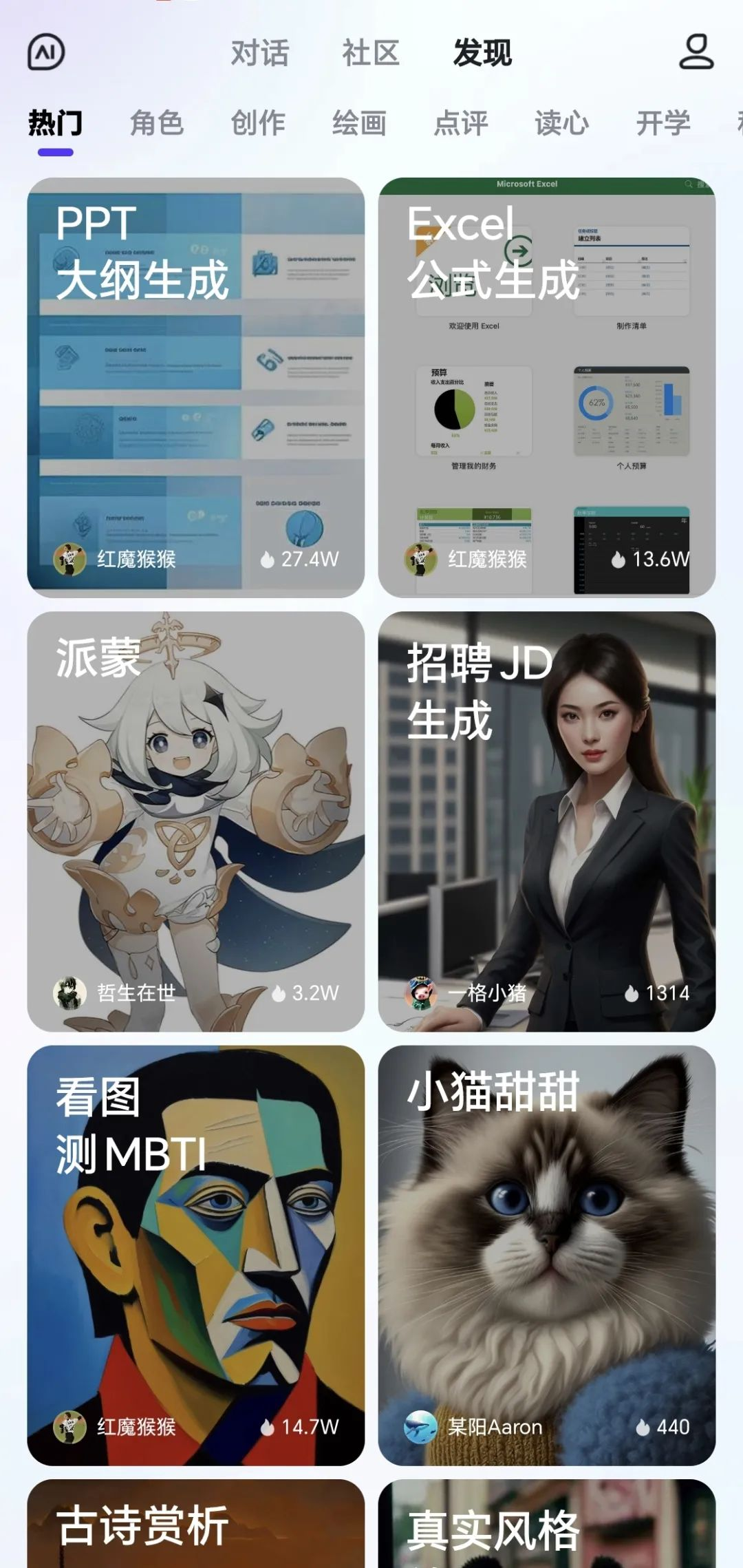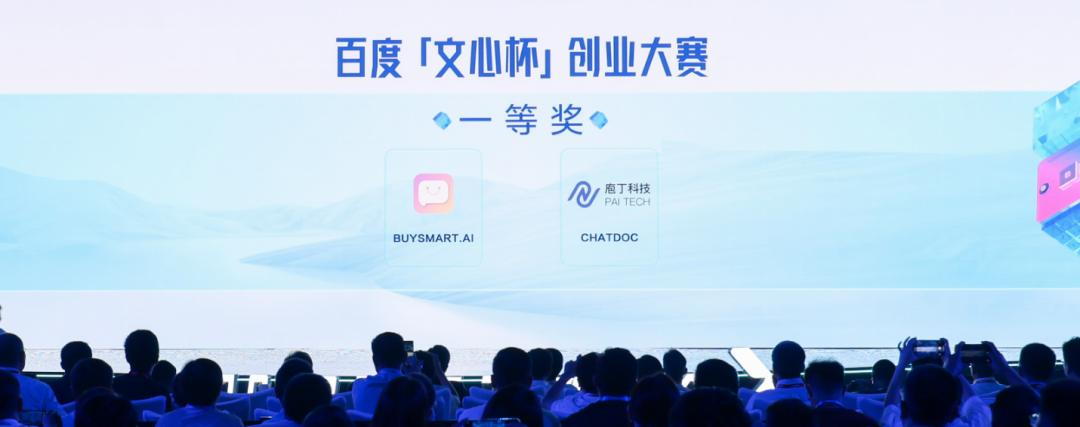With many large models announced to be open to the public, the era has come when everyone can “use” AI. In just over half a year, 130 large model companies have emerged in China, and the “Battle of 100 Models” is truly worthy of its name. Now, the knockout rounds have begun, and the large-model products have finished their internal testing and are sitting on the card table, waiting for market testing. Large model manufacturers, which were pushed into the second half overnight, began to face new problems: How should they fight the application war?
The first half of September was the busiest period in the domestic large model field.
As Tencent announced the opening of its large model “Hunyuan” on September 15, BAT also officially “joined forces” in the field of general large models. In the past half month, more than a dozen large model products have announced that they have passed the “Interim Measures for the Management of Generative Artificial Intelligence Services” and are open to the public.
As if overnight, the field of domestic large models has been pushed into the second half of the competition. If the main focus of the first half was on technology, the big models, which had been in internal testing until now, have rushed into the sea of people, waiting for the test of the market.
If you want to survive, you have to use it. Large model manufacturers are non-stop “rolling up” AI applications. In September, Baidu upgraded its intelligent cloud Qianfan large model platform and released 11 AI native applications; after Alibaba’s Tongyi Qianwen large model was opened, Taobao’s native large model AI application “Taobao Wenqi” also launched internal testing.
But this also means that 130 large model companies, especially 40% of general large model companies, are facing a “battle royale” of life and death elimination.
Are “Wen Xin Yi Yan” useful?
For Chinese big models, August 31st is a day worth remembering.
At 0:00 on August 31st, Baidu “Kadian” announced that its large model Wen Xinyiyan would be open to the public, firing the first shot. An hour later, at around 1 a.m., Zhipu AI announced that the large model of Zhipu Qingyan was open; at 3 a.m., Baichuan Intelligence also pushed the news that the large model would be open to the public. In the next half month, more than a dozen companies have announced that their large models are open to the public.
The concept of large models has only been popular for more than half a year, but in China, according to CCID Consulting data, a total of 130 large models have been released as of July, of which general large models account for 40%. But previously, most large model products were still in the internal testing stage.
According to the “Generative Artificial Intelligence Service Management Measures (Draft for Comments)” that came into effect on August 15 this year, companies need to declare a security assessment to the national cyberspace department and conduct a security assessment before releasing generative artificial intelligence (AIGC) products. Algorithm filing. This has also become the only way for domestic AIGC products to go on the market before compliance.
Now that the boots have landed, the domestic models have entered the second half of their run overnight. After working on the algorithm and parameters for more than half a year during the internal testing phase, whether the large model is easy to use or not, whether it is a mule or a horse, it has to be taken out for a walk.
The first battle started from the moment it was officially announced. Big models are racing against time to release news, not only for time, but also for traffic.
Opening the C-side entrance is of great significance to large model manufacturers. It can not only improve the public awareness of large models, but also accumulate a large amount of data and train models. Before the winner of the domestic “Battle of 100 Models” has been decided, whoever gets the ticket to open the gate first means that whoever gets the time advantage.
Judging from the large model products that have passed the approval, they have also chosen “personal AI assistant” for layout, focusing on tools that cover most of the daily scenarios of users, from work to entertainment, trying to become the “super entrance” for C-side applications.
For example, Wenxinyiyan can provide applications in a variety of different scenarios, such as content creation, AI painting, translation, AI office, etc. The categories are also divided into more detailed categories, including writing outlines for PPT, writing research reports, and writing work daily reports. , writing copy for Xiaohongshu, testing user MBTI, and playing with some trendy words and “nonsense literature” on the Internet. Based on the Skylark model, Byte has launched a public beta of the developed AI dialogue product “Doubao”, which also integrates functions such as learning assistant, writing assistant and dialogue.
The more people use it, the more complaints are inevitable. One user said that he had asked several products on August 31 using the question “How many large models have been opened?” and the answers were different. Large language models are prone to the “illusion” problem of induction and nonsense, which still exists in various products. On social media, there are also a lot of jokes about “molesting” big models. For example, some bloggers use various “nonsensical” questions in Baidu Tieba’s “Retarded Bar” to ask different big models.
But the traffic effect brought by opening up is huge. According to official data released by Baidu, within 24 hours of opening, Wenxin responded to more than 33.42 million questions from netizens, and the App was downloaded more than 1 million times. On August 31, it topped the list of free apps in the Apple App Store. A few days later, after the Spark Cognitive Large Model was opened, it replaced Wen Xinyiyan and topped the App Store free list that day.
The rapid influx of traffic also brings pressure on computing power. After Wen Xinyiyan and Shangtang’s large models were released, there was a queue for downloading. Baidu officials once responded: “The traffic has exceeded expectations and new computing power is being mobilized. Please reduce your teasing and make way for users for work and study purposes.”
Prior to this, the only generative artificial intelligence application that “swiped the screen” was the Miaoya Camera incubated by Alibaba Entertainment. Next, major manufacturers will also reconstruct based on the large model and “remake” all products. Perhaps more “hot” applications like Miaoya Camera will also appear.
But for large model manufacturers, the more important thing is whether they can “support” themselves after facing market testing?
Knockout Round Starts: Volume Industry, Volume Application
At the end of the first half, the brutal elimination round of the big model kicked off. Shen Dou, executive vice president of Baidu Group and president of Baidu Intelligent Cloud Business Group, mentioned in a conversation with the media that with the liberalization of models, it is easier to judge the pros and cons, and many large models on the market will “quickly disappear.”
Cheng Hao, founding partner of Yuanwang Capital and founder of Xunlei, also mentioned that if there are more latecomers in the general layer, it will not be of much significance. Although the general big models have not yet decided the winner, this field has become “a game for the few.” He estimated that no domestic investors would look at such a large base model again.
Large models have also reached a turning point in commercialization: if you want to survive, “use it” is the last word.
On the path to commercialization, ChatGPT has set an example for latecomers: when its registered users cross the 100 million mark, it begins to charge subscription fees for the C-side, which is US$20 per month; but the money on the B-side is always its focus. It opens APIs (application programming interfaces) for enterprises and developers and charges a fee. In August this year, it launched the ChatGPT enterprise version.
Among the large open model manufacturers in China, none charges membership fees for the C-side. This is certainly to attract more traffic in the early stages of opening, but it is also because users’ habit of paying for Internet applications has yet to be developed. In the minds of most ordinary users, large models are still just a chat tool, and their willingness to pay is not strong.
Relatively speaking, B-side enterprises are still the customer group with the highest willingness to pay for innovative applications, and there is also a strong demand for intelligence. Therefore, “going to the industry” has already become a consensus on the commercialization of domestic large-scale models.
In China, large models based on vertical industries such as medical care, finance, and education have emerged one after another. Companies that have released general large models are also launching model services for industries.
But even so, domestic users still have a “cognitive wall” against large models. After being popular for more than half a year, big models are still “floating” in the sky. Not only have they just been opened to C-end users, but outside the industry, even many companies are still confused about it. As the product technology director of a medical and health care company in Beijing, Wang Cheng said that the company’s senior management began to discuss the changes that large models will bring to the industry a few months ago, but they have been discussing for a long time and are still waiting and watching. How to start.
Large models must be applied. What we get from customer feedback will improve the quality of data training and push the industry forward faster.
Domestic leading technology companies have been building platforms for many years and have relatively rich industrial resources. They have also connected large models to their own cloud platforms, focusing on the “large model platform + solution + AI application” model. AI capabilities empower enterprises.
Robin Li, chairman and CEO of Baidu, publicly stated not long ago that “the volume model is meaningless, and the volume application opportunities are greater.” Next, whether it is a company at the general level or an enterprise that innovates based on the general model, It will be a fierce open book on AI applications.
“The speed of future application development will be very fast. As a digital infrastructure, large models themselves are already maturing. Based on this, applications in various industries will definitely emerge in batches.” Cheng Hao said.
The battle for success starts with who can open up the market among industry customers first. “Even a small traditional industry company like ours has been treated enthusiastically by Baidu Sales. They wish they could contact us every day to communicate.” Wang Cheng joked.
How to fight the application layer war?
As the horn of the “second half” sounds, participants of all identities and backgrounds are adjusting their pace as quickly as possible, hoping to find their place in the new stage.
manufacturers that are more advanced in all aspects and qualified to go online are already gearing up.
A staff member of a general-purpose large model enterprise told “Shijie” that “after receiving the notice from the local government, our first step is to announce the opening to the whole society as quickly as possible.” According to their observation, the actions of various general-purpose large model enterprises are highly unified. After obtaining qualifications, they immediately start providing services to the society.
However, for the first batch of enterprises that announced the opening of large models, the more urgent task than attracting To C users is to open up a breakthrough in the To B field and establish their role as “water sellers”. Looking around, every company is striving to create a more complete large model product system and actively seek more partners and customer companies.
Among the first batch of enterprises that announced the opening, Baidu was the first to express its attitude at the Yunzhi Conference on September 5th. Li Yanhong publicly stated, “Baidu’s goal is to build a solid foundation for large models and support the development of AI native applications.” The so-called AI native applications are applications developed directly on the AI platform. According to Li Yanhong, it is to rely on the capabilities of large models to solve problems that could not be solved in the past or were not solved well.
In order to quickly expand its “circle of friends,” Baidu held the “Wenxin Cup” entrepreneurship competition and announced that it will invest millions of yuan in outstanding teams and provide long-term support in technology, products, development strategies, capital cooperation, and other aspects.
Other leading manufacturers of general large models have also made corresponding layouts in this area. For example, ByteDance’s large model service platform “Volcano Ark” provides enterprises with all-round platform services such as model fine-tuning, evaluation, and inference, and has MiniMax and other customer enterprises. SenseTime also stated that its “SenseNova” large model system and generative AI product series have covered five mainstream generative AI applications such as natural language interaction, AI document image generation, digital humans, 3D large scene reconstruction, and 3D small object generation, and will continue to upgrade in the future…
On the other hand, the other side of heavily betting on ecological construction is that enterprises need to mobilize more investment in computing power, manpower, and other aspects. As the competition for general large model ecology and war preparation competition led by leaders becomes more intense, more small and medium-sized enterprises need to find opportunities from the subdivision market.
In the view of a large model practitioner, it is difficult for small and medium-sized large model enterprises to match the funds, talents, and R&D scale of Internet giants. There is no need to “struggle” on general large models anymore. “Instead of expanding the scale, it is better to find the demand point and open up the subdivision market as soon as possible.” From this perspective, many small and medium-sized enterprises have already begun to try to land and monetize. A staff member of Fourth Paradigm once told “Shijie”: “At present, the scenarios we have landed in include medical categories, etc., upgrading a large model + based on existing users. We still take a To B approach to do large models. I think the main reason is that we don’t have To C product genes originally, not that To C commercialization is more difficult, but that it is more in line with the company’s original positioning and inherent mode to do it from a To B perspective.”
“The head of another unnamed digital model enterprise revealed: ‘As early as the first half of this year, we have already implemented some enterprise-level large models in customer scenarios.
‘ This is just the beginning. In the future, as the ‘tentacles’ of general large model enterprises extend to various segmented fields, small and medium-sized enterprises may still have a chance to compete.
In addition to the supply side, many large model application layer entrepreneurs are also welcoming new opportunities and challenges.
One large model application layer entrepreneur said: ‘I always believe that there will be various intelligent models in the future, forming various intelligent service providers. Filing means that in the future, an ecosystem of intelligent suppliers that can grow compliantly on several general models will be established.’
With the gradual opening of general large models, it has become more convenient for enterprises to obtain AI capabilities, and competition at the application layer will become more intense. However, small and medium-sized enterprises in this field are currently not worried about this. Zhou Jian, CEO of Lanma Technology, said: ‘The discovery of any new land is paved by pioneers, and then more people come in.
Competition will definitely be very fierce, but no industry can form a complete monopoly. Even large companies cannot complete all internal applications of all enterprises.’
In his opinion, this will be an excellent opportunity instead. According to his observations, some enterprises in different vertical industries have a very positive attitude towards digital transformation, but sometimes they do not choose large companies as their first choice.”
For various reasons, some problems cannot be solved by universal large models, and some companies do not necessarily need to use universal large models. For example, some financial institutions, due to cautious considerations of risk control and data security, may also choose to cooperate with vertical industry model companies or develop large models on their own.
For application layer players, the key to the next round of competition lies in the “accurate capture of user needs”, that is, the ability to define products.
“I think that the opening of large models has little impact on most entrepreneurs. We expect that there may be a situation where large model interfaces are flooding in the future.” said Luo Yuchen, founder of large model application company Yantu Intelligence.
“The big factories have an advantage in resources. However, small factories are obviously more flexible and grounded. The real problem is how AI native applications should be done.” Luo Yuchen said to “Shijie”, as an AI native application, without large models, there is nothing. “How can it seize opportunities in the market and truly occupy a place? When will AI native applications really break out? This is also the most concerned issue in the industry.”
In Zhou Jian’s view, by early next year, China’s large models will basically be able to achieve the ability of GPT-3.5; it may take at least another year to reach the level of GPT-4. However, the industry will continue to evolve, “like GPT also has certain shortcomings, as we use large models to do applications, we can see that there are still many paths to fill in the shortcomings of different large models, and perhaps more different large models will be differentiated in the future.”
In summary, the stage of “waiting for the wind” has passed, and the east wind has arrived, and competition in various market links will be accelerated. After the strong wind blows away the floating dust, what is revealed is real gold or rubbish, which still needs to be tested by the application market.









